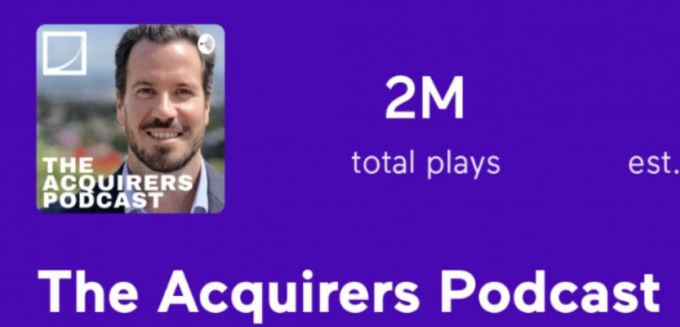During his recent interview on The Acquirers Podcast with Tobias, Adam Mead, author of The Complete Financial History of Berkshire Hathaway discussed Buffett’s Mastery In Capital Allocation. Here’s an excerpt from the interview:
Tobias: I just want to take you back a little bit to the BNSF. I remember reading some analysis of this. I’m not entirely sure when, over the last five years, where somebody said, ‘They paid $35 billion for this, but they got a lot of their capital back really quickly.” I forget the exact numbers now, but it was some– in a very short order, they had a lot of their capital back, but potentially all of their capital back from that acquisition. Do you have any detail on that?
Adam: I do and again– I’ll plug my website, theoraclesclassroom.com. I’ve actually released my spreadsheet that I used to put together the book on the Sheets, it’s about 200 tabs. I do have in there, the dividends. Because BNSF is a large business that has public debt, it has to file 10Ks of its own and so, we’re lucky to be able to see basically everything that BNSF is doing. So, you’re right. I don’t have the exact figures on the tip of my tongue, but you can see the dividends that were paid from BNSF up to Berkshire ever since it was acquired and I think you’re right. They were large over time and I think I’m pretty confident in saying that at this point, they’ve exceeded the purchase price and then of course, Berkshire has this wonderful earning asset still on the books.
Tobias: I just think it’s one of the underappreciated aspects of what Buffett does, that he buys these things and the capital is rapidly returned to Berkshire and then he ends up owning the business. Scott Fetzer is another great example of a business that he saw that he could get the capital back. Then, I wasn’t aware, but Berkshire Hathaway itself, you say initially the thing that attracted him to it was that it was returning so much capital beforehand. So, it’s not something I’ve heard discussed a lot, but I think it’s an important aspect of what he does.
Adam: Yeah, and he’s gotten criticism for it. It’s almost this paradox of Buffett loves getting cash, but he won’t give it out. But that’s the structure of Berkshire Hathaway, where they can move the capital upstream to any other business and it really is about maximizing the potential of the business and so, if it’s a cash flow stream that grows and they can reinvest at high rates of return, great. Good rates of return, that’s good too.
I’m thinking of Berkshire Hathaway Energy, when they have not paid a dividend up to Berkshire, the parent at all. They purchased in 1999, they’ve retained all their earnings and so, that’s allowed them to grow. So, he doesn’t always grab that cash, I think he would just prefer it come to him, and again, with Scott Fetzer. You can start to incorporate all of these examples of all these other things like management compensation, and incentivizing the manager based on the business itself, and using a hurdle return, so that they’re incentivized to send that capital and not just sit on it or reinvest it in something poorly. There’s all these wonderful details that come out of study of Berkshire Hathaway.
Tobias: See’s too. I remember it. I think he wrote in 2011, he wrote about buying it in 1972 for $27 million, and pointing out, I think in 2011, it had returned a billion dollars or so, a number like that over the course of the Berkshire’s holding in it.
Adam: Yeah, I think that the latest figure was maybe $2 billion and that number’s probably– The last actual figure that I saw was something like $85 million in earnings. So, you do the math, that number has to be closer to $2.5 billion I would bet, today.
You can find out more about Tobias’ podcast here – The Acquirers Podcast. You can also listen to the podcast on your favorite podcast platforms here:
For all the latest news and podcasts, join our free newsletter here.
Don’t forget to check out our FREE Large Cap 1000 – Stock Screener, here at The Acquirer’s Multiple:




